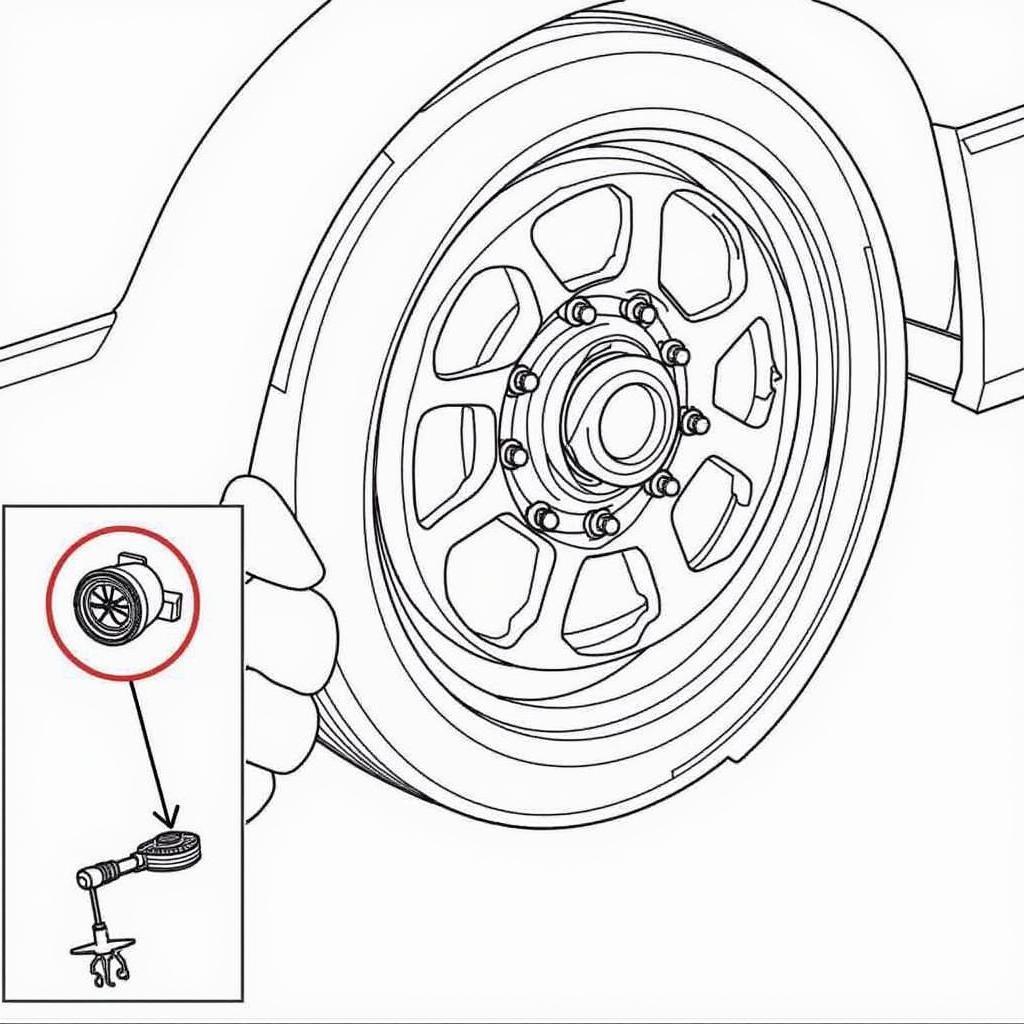Losing or damaging your car key fob can be a major inconvenience. But did you know that in many cases, you can actually reprogram a key fob yourself? This can save you a trip to the dealership and potentially a lot of money. This comprehensive guide will walk you through the process of how to reprogram a key fob for various makes and models.
Understanding Key Fob Programming
Before diving into the steps, it’s helpful to have a basic understanding of how key fob programming works. Essentially, your car’s computer system needs to “learn” the unique code transmitted by your key fob in order to recognize it and allow you to unlock the doors, start the engine, and use other functions. Reprogramming involves erasing the old code and teaching the system a new one.
Can I Program a Key Fob Myself?
The answer to this question depends on the make, model, and year of your car, as well as the complexity of your key fob. Some vehicles have straightforward DIY reprogramming procedures, while others require specialized equipment and software.
For simple key fobs, you can often find instructions in your owner’s manual. More complex systems might necessitate a visit to a dealership or an automotive locksmith. You can often find resources online for specific car models, but always double-check your owner’s manual for the most accurate information.
Gathering the Necessary Tools
To reprogram your key fob, you’ll need a few basic tools:
- Your car’s owner’s manual
- All existing working key fobs for your vehicle
- A quiet and safe working environment
Common Key Fob Reprogramming Methods
There are several methods for reprogramming a key fob, each with its own set of steps:
1. The Ignition Method
This method involves a specific sequence of turning your key in the ignition, opening and closing doors, and pressing buttons on your key fob.
Here’s a general outline of the steps:
- Enter your car and close all doors.
- Insert your key into the ignition and turn it to the “ON” position (do not start the engine).
- Repeat the process of turning the key to the “OFF” position and back to the “ON” position several times, ending in the “ON” position.
- Press and hold the “Lock” or “Unlock” button on your key fob for a specific duration.
- The car’s system should respond by locking and unlocking the doors, indicating successful programming.
Expert Insight: “The ignition method is one of the most common and often the simplest methods for reprogramming key fobs. However, the exact sequence of steps can vary significantly between car manufacturers and models,” says John Smith, Senior Automotive Technician at XYZ Auto Repair. “Always consult your owner’s manual for the specific instructions for your vehicle.”
2. The OBD-II Port Method
Some vehicles allow you to reprogram key fobs using the onboard diagnostics (OBD-II) port, typically located under the dashboard on the driver’s side. This method requires an OBD-II scanner, which you can purchase or borrow.
Here’s a general overview:
- Locate the OBD-II port in your vehicle.
- Connect the OBD-II scanner to the port.
- Follow the on-screen prompts to access the key fob programming menu.
- Enter the required information, such as the number of keys you’re programming.
- Follow the instructions to program each key fob individually.
3. Remote Programming
Some newer vehicles offer remote programming options, allowing you to reprogram your key fob using your car’s infotainment system or even a mobile app. Refer to your owner’s manual or contact your vehicle manufacturer for details on remote programming procedures.
Troubleshooting Common Issues
If you encounter problems while reprogramming your key fob, here are some troubleshooting tips:
- Double-check the battery in your key fob. A weak battery can prevent successful programming. If you need to replace it, you can find helpful guides on car key fob battery replacement.
- Ensure you are following the exact steps outlined in your owner’s manual. Even a slight deviation can disrupt the process.
- Try repeating the programming process from the beginning. Sometimes, starting over can resolve minor errors.
- Verify that your key fob is compatible with your vehicle. Not all key fobs are created equal, and using the wrong type can lead to programming failures.
When to Seek Professional Help
While DIY reprogramming can be convenient, there are situations where seeking professional assistance is recommended:
- You’ve lost all your working key fobs. If you have no working keys to initiate the programming process, you’ll need a locksmith or dealership to program new keys for you.
- You’ve tried multiple times to reprogram the key fob without success. Continuously attempting the process without success can potentially lock your system, requiring more extensive repairs.
- Your vehicle requires specialized equipment or software for programming. Some newer models have advanced security features that necessitate professional tools and expertise.
Conclusion
Knowing how to reprogram a key fob can save you time and money in many cases. By carefully following the instructions in your owner’s manual and understanding the different programming methods available, you can potentially tackle this task yourself. However, don’t hesitate to seek professional help from a dealership or automotive locksmith if you encounter difficulties or if your vehicle requires specialized equipment. Remember, when it comes to your car’s security system, it’s always better to err on the side of caution.

